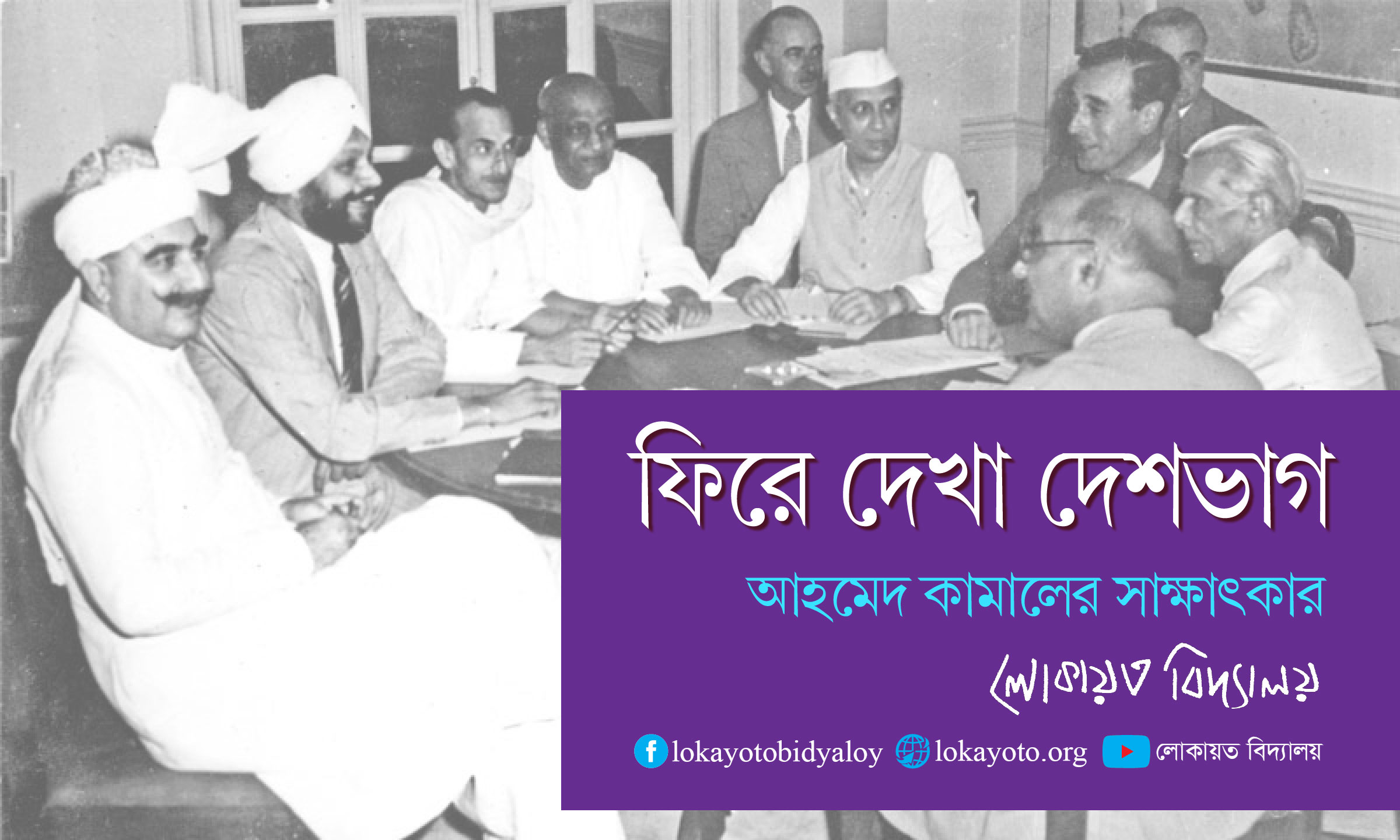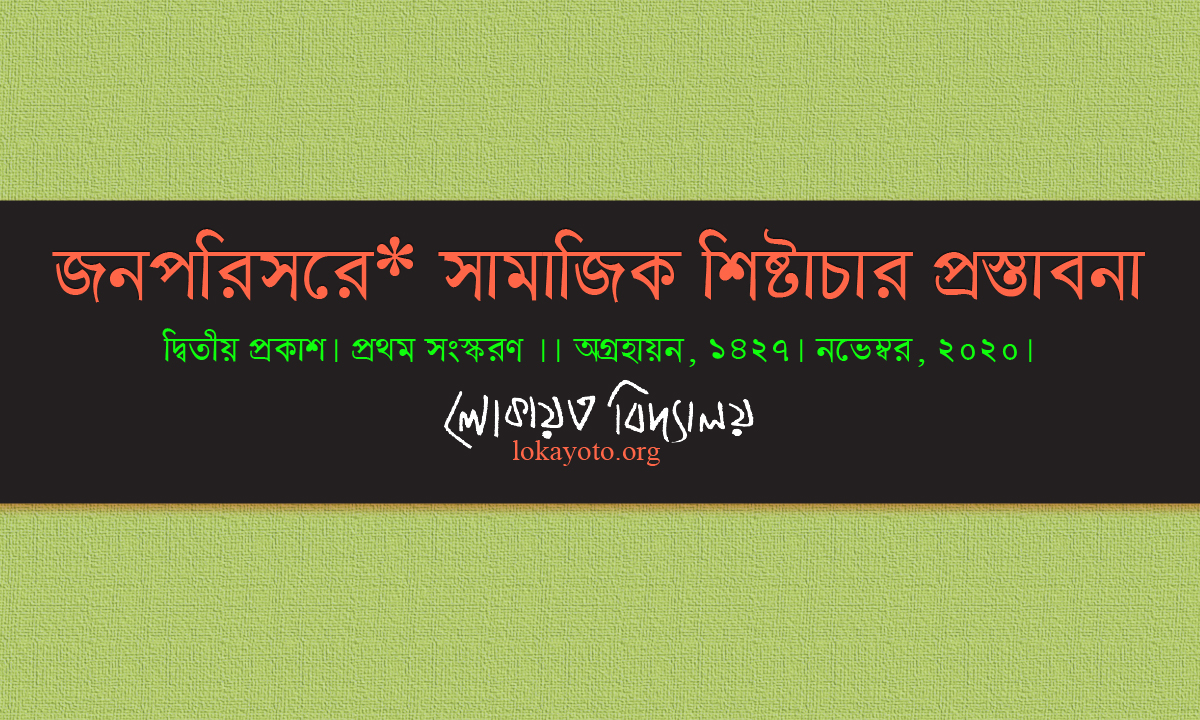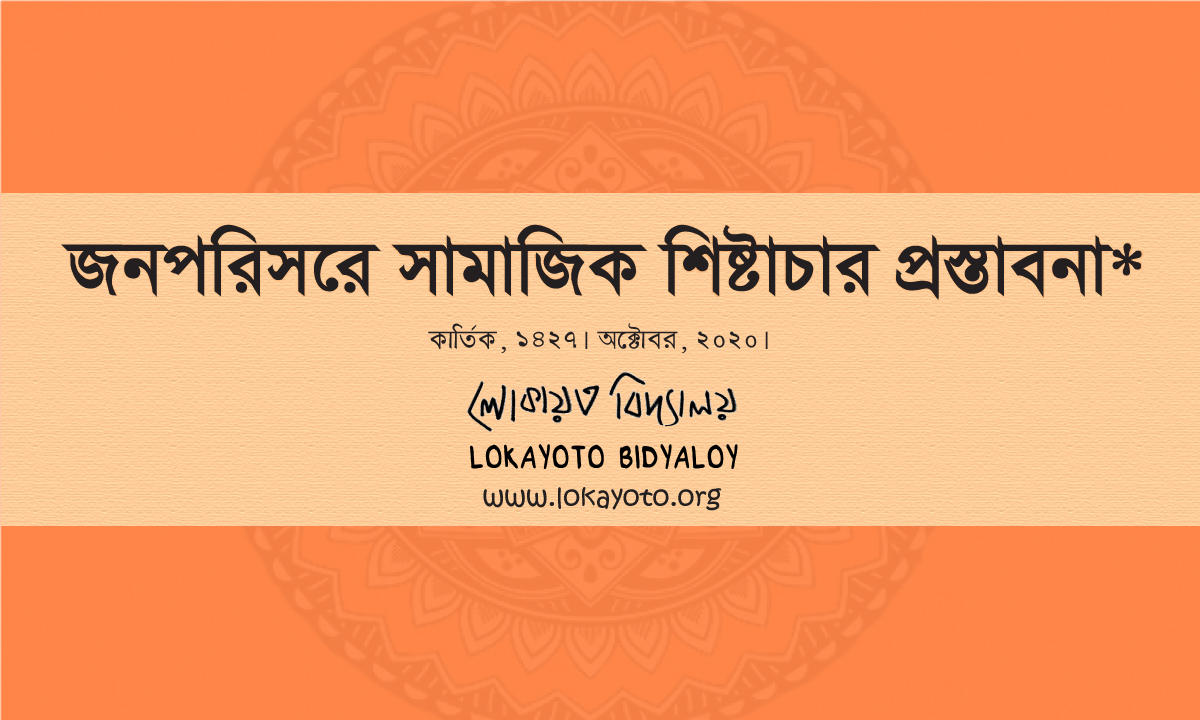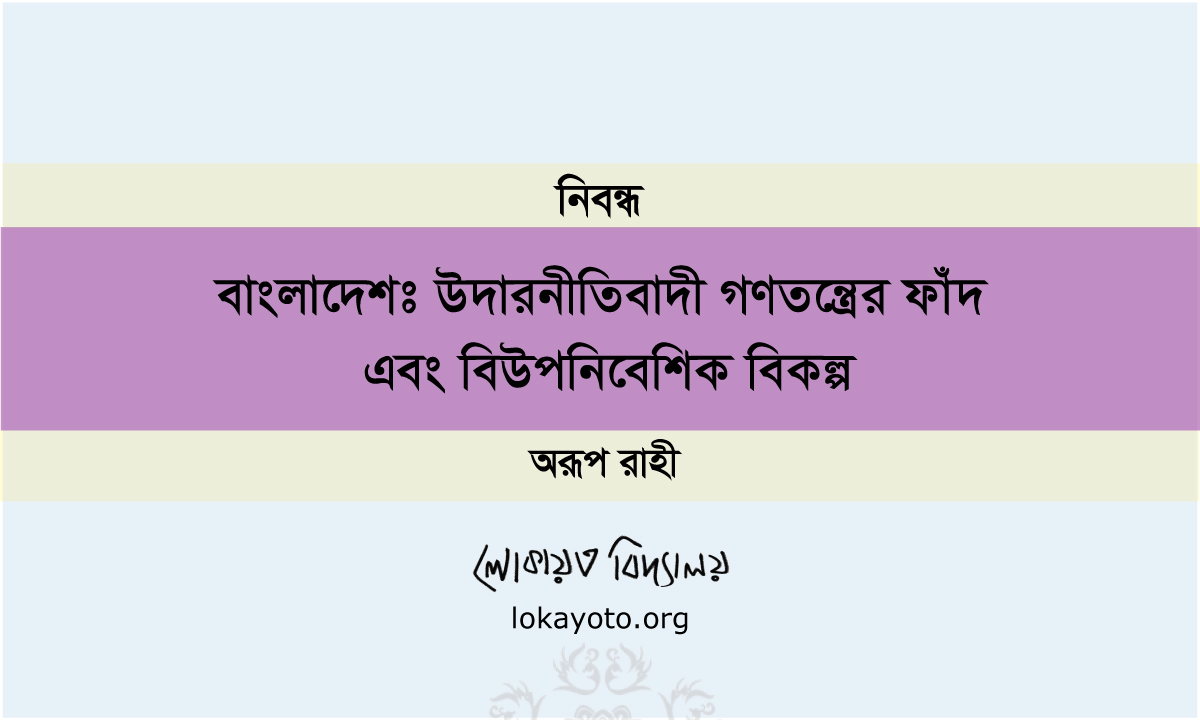
(podcast)জলবায়ু রাজনীতি সিরিজ।। পর্ব-১
November 20, 2019
দ্বীন ও দুনিয়া (ইসলাম সম্পর্কে পর্যালোচনামুলক পাঠের একটা তালিকা)।। অরূপ রাহী
February 10, 2020Mao-Lana Bhashani Of Assam/Bengal/Pakistan/Bangladesh।। Layli Uddin
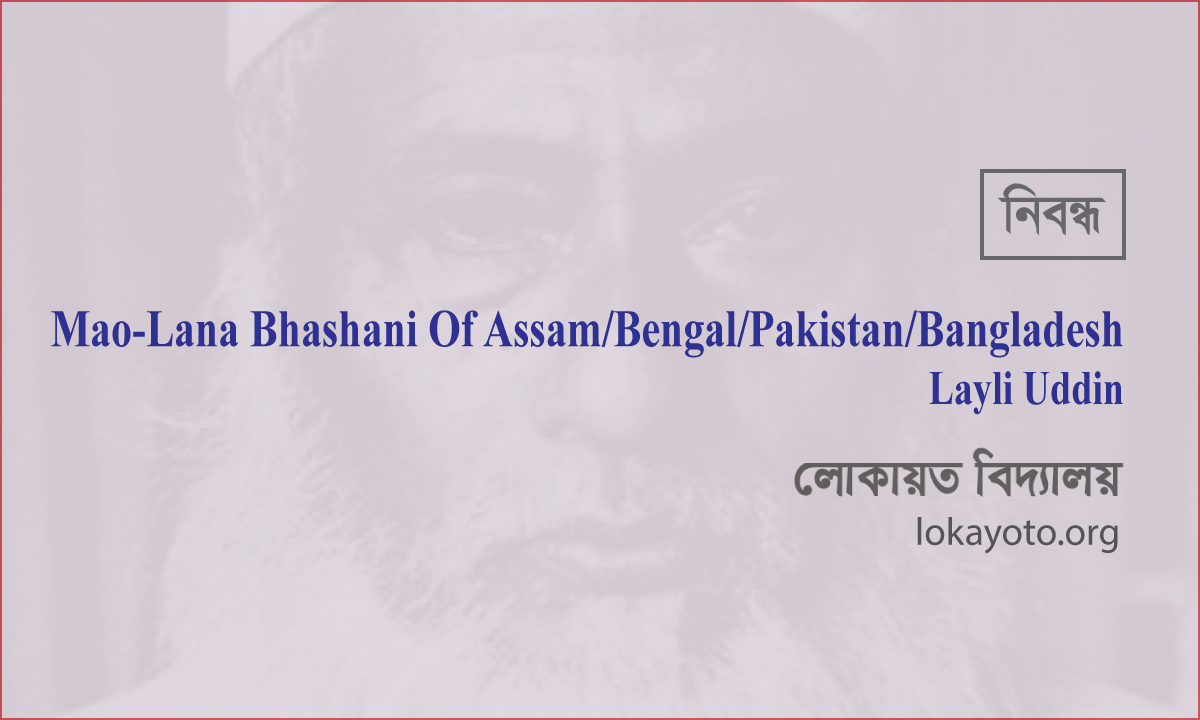
Maulana Bhashani remains a much demonised figure amongst a certain section of North East India for his espousal of the immigration of Bengali land hungry peasant into colonial Assam. But who was Maulana Bhashani? A rustic pir? A vulgar peasant leader? Scourge of Colonial Indiaian and Post colonial Pakistani & Bangladeshi state? Communist? Islamist? Today, socialism and Islam are often viewed as incompatible. Does the career of Maulana Bhashani, “the Red Maulana” of Bangladesh, offer a corrective to this view?
By 1974, the dreams and hopes of liberation in Bangladesh had soured: unemployment, hunger and political repression were in full force. Anthony Mascarenhas, one of the first journalists to alert the world about the scale of massacre committed by the Pakistani army against the Bengali population in 1971, described the Rakkhi Bahini, an elite paramilitary force established after the independence of Bangladesh in the same year, as “a private army of bully boys not far removed from the Nazi Brown Shirts”. They were used by the new regime led by the Awami League to crush opponents and critics. In time, Mascarenhas wrote: “it completely terrorised the people”. By the end of 1973, politically motivated murders committed by the Rakkhi Bahini had crossed the 2000 mark. Many of those killed were said to be Maoist enemy agents, but often on fairly spurious grounds such as “found carrying Chinese wireless sets”. Why was the Awami League so worried? The answer to that goes back before 1971, to stories that hint at the different possibilities that the ruling party in East Pakistan at the time, the Awami League, had been well aware of, and needed to suppress.

One such story emerged in my conversation with a man who was 8-9 years old in 1970-1971. He remembered Maulana Bhashani’s posters and young people carrying the little red book in their pockets in his hometown in the outskirts of Dhaka. Then there are the stories of the strange and cryptic shab-e-namas (night messages) that appeared on the walls of Dhaka and elsewhere just before the war, demanding a North Bengal province. Finally, there are the stories of rallies in early 1971, where young men and women donned red caps and shouted out “jatir pita” (father of the nation) at Bhashani. These stories may seem unremarkable, but they suggest to me that there were multiple “fathers” involved in the unmaking of Pakistan and making of Bangladesh. They suggest that Bhashani inhabited political spaces and constituencies that were not encapsulated or accommodated within the politics practiced by the Awami League or Mujibur Rahman, widely considered the founding father of Bangladesh. On the contrary, these stories suggest Bhashani’s constituencies encroached upon and threatened to overwhelm and overturn the Awami League’s future plans for the new nation-state. The paper will show how Mujib’s nationalism was just one of the currents in East Pakistan over this period, the other provided by Bhashani was the articulation of a radical, progressive and transnational vision of freedom, justice and equality.
Who was Maulana Bhashani?
Maulana Bhashani’s life, hitherto, has received little curiosity or attention from academics, despite having been such a heavy weight figure in South Asian Muslim politics and beyond. Who was Bhashani? Abdul Hamid Khan Bhashani (1880-1976) was a venerated pir, peasant leader and politician of colonial Assam and Bengal and postcolonial East Pakistan and Bangladesh. He was a scourge of colonial and postcolonial regimes. President of the provincial Assam Muslim League during the colonial years, he went on to form two of the most powerful opposition parties in Pakistan, the Awami Muslim League and the National Awami Party (NAP) – the latter whose birth Ajoy Ghosh, a member of the Communist Party of India, described as an “event of historic import for the Pakistan people”. If there was an all-Pakistan figure after Jinnah, it was perhaps Bhashani. Stories about him come from both wings.

Notwithstanding, Bhashani presents a tricky and complex subject to write about for a number of reasons. How does one write about a leader who has not only left few written traces of his own ideas but appears as a figure of scorn and ridicule in official archives? Archives in the United Kingdom and the United States on East Pakistan are replete with instances of politicians, journalists and members of intelligentsia of both wings of Pakistan offering up information on Bhashani’s illiteracy, ignorance, rusticity, irrationality, on him being crude, vulgar, violent, not really a Maulana or not really a Communist, among many other things. Historians have ended up sharing the same disdain, content with their descriptions of him as a firebrand preacher or agitator. However, if you listen closely, and I mean closely to other voices – voices that are often choked at the thought and memories of Bhashani – he becomes more than an agitator. He is the Majloom Jononeta or leader of the oppressed in Bangladesh. He is the politician who presided over one of the largest kissan (peasant) conferences in Punjab and who, quoting Iqbal, told the people to burn the land that does not feed them. He is the pir who appeared in the dreams of Bengali farmers after having flown on his boat driven by a pack of tigers to discuss the next struggle. And for the working-class diasporas in Brick Lane or Jackson height, he is their Che, Rosa, and Malcolm X.
I want to recover Bhashani from the condescension and silence of history. I explore his role in the 1969 uprising in Pakistan, a significant moment in the unmaking of the state, leading to the victory of the Awami League in 1970 elections. I upend the conventional narrative around the 1960s and show that Maulana Bhashani was far from the weakened figure that he was made out to be. Derided by his opponents as “Mao-Lana” for his Maoist inclinations, Bhashani was nonetheless seen as having little political support or teeth.
Bhashani’s political practice
So to begin: on 5 December 1968, the plane carrying Pakistani President Ayub Khan and his entourage landed on the tarmac of Tejgaon airport in Dhaka. Ayub was guest of honour in celebrations marking Pakistan’s “Decade of Development” or as his opponents wryly put it, the “Decade of Dictatorship”. With Mujib in jail, and schools and universities closed for an indefinite period, the president was assured that the main sources of agitation in East Pakistan had been tamed. It was a grave miscalculation. Ayub’s trip was completely overshadowed by the massive protests and hartals (strikes) that besieged Dhaka and the other areas of East Pakistan, and which signalled the first phase of the 1969 uprising in the East Pakistan province. The trouble for the administration had come from different, though not entirely unexpected, quarters.

Bhashani’s call for a hartal on 7th December 1968 was an unprecedented success. Over the next few days as strikes occurred consecutively, the newspapers’ front-page headlines screamed out to its readers, while its content provided blow-by-blow accounts of police firing, deaths and injuries, walkouts at the Legislative Assembly and Bhashani’s spectacular defiance of Section 144. The strikes were also repeated in other parts of the province such as Chittagong, Noakhali, Sylhet, Bogra and Khulna. The scale and swiftness with which they took place and the wholeheartedness with which people responded to them even surprised NAP members. Thus, contrary to impressions of Bhashani as a politically passive and agreeable figure to the regime, who was famously reported to have said to his followers “Do not Disturb Ayub”, a different archive in the 1960s suggest that Bhashani was actually stealthily organising and mobilising peasant constituencies in North Bengal and labour constituencies as well through boat tours and political assemblies, building up his network of murids (disciples) and Marxists for the very purpose of mobilising them to fight for their freedom, equality and dignity. All of which gave him, in December 1968, an advanced insight into the readiness of certain sections of Pakistan’s population for battle.

Over the 1960s, Bhashani’s engaged in several innovative practices that were intended to organise and mobilise his constituent groups to bring about a form of Islamic Socialism or at least prepare the way for it. Though I do not want to draw a strong correlation, Bhashani’s encounters with left-leaning activists and leaders in Europe, the World Peace Council, China, and Havana were to leave a strong impression on his politics. Bhashani held Islamic Socialism as the antithesis to imperialist depredations. Unlike Mujib’s Six-Point programme, which sought greater freedom for the Bengali populace at large, Bhashani offered the peasants and workers a model that primarily spoke to their material and spiritual emancipation and made them central to its realisation.
Bhashani did this in several ways. First, through the introduction of new relationships and linkages, which brokered the most unlikely of alliances between Bhashani’s murids and the Marxist workers of NAP, Krishak Samiti, and Mazdoor Foundation and legitimated the existence of the “other” in one another’s worlds. This he did through the modification, if not complete innovation, in his relationship with his murids, particularly in the bay’ah (oath of allegiance) that they undertook over this period. The bay’ah demanded alongside the usual articles of belief in God, Prophet and the spiritual lineage, a belief in socialism. The bay’ah made a Marxist of the murid and a murid out of the Marxist.
Their common purpose not only made both groups acceptable to each other but also endowed both with an equal standing and the right to enter into the same spaces and use the language of the other. With the Marxist workers of NAP and Krishak Samiti more frequently present at religious gatherings and mosque, the murid was to find his world equally transformed during this period. With belief in socialism now naturalised into an article of faith, the murid’s search for that deeper connection with Bhashani and God was to be found in his engagement with the external world of political activism as much as the internal world of dhikrs (chants) and muraqaba (meditation).
The second intervention Maulana Bhashani made over this period came through his introduction of new ideas, language and vocabularies in assemblies and gatherings, intended to impart to the peasant and workers a sense of their own power and dynamism. Bhashani introduced his constituents to their new selves over this period: they were the sarbahārā (have-nots). Though sarbahāra itself was not a new term, and regularly used in the Marxist lexicon to refer to the proletariat class, Bhashani opened it to incorporate wider and different histories, futures and icons, both sacred and profane. The sarbahāra for him constituted a class that was not defined by what they lacked, but by their ubiquitous presence across different times, geographies and civilisations, possessing the power to change the course of history. The sarbahāra found their own champions and heroes contained within these narratives, as varied as Mao Tse Tung and Abu Dharr al-Ghifari, a companion of the Prophet and someone more significant in Shi’a than Sunni historiographies. When a disgruntled Kazi Mohiduddin declared NAP as the “sarbahāra party, with a sarbahāra programme, holding little value for any other class”, he intended his words to shed light on why he had resigned from Bhashani’s NAP to help form the pro-Moscow NAP. What the resignation actually signalled was that Bhashani had succeeded, at least in his own rhetoric, to project the peasants and workers as constituting a well-defined and powerful class, who were capable of representing their interests and prepared to play an instrumental, if not leading, role to bring about fundamental changes to state and society.
The ghost of Bhashani

While Bhashani’s muted public pronouncements and attitude towards the Ayub regime contributed towards his diminishing importance in the political scene of Dhaka, Bhashani’s activities, particularly in North Bengal, suggest a different story altogether. His attempts to create more powerful, organised and conscious constituencies through the introduction of new alliances, histories and practices were less placatory and more defiant in their attitude to a regime that denied social, political and economic dignity and equality to its people. The success of his tactics can be seen in the desperation of Ayub. On 9th March, just weeks before he resigned, Ayub Khan’s diary entry reads “gangs of communist and terrorists on the prompting of Bhashani are raiding police stations, the houses and properties of Muslim Leaguers, and asking the chairman and members of Basic Democrats to resign (….) in consequence, most of the civil officers have left their posts and so have the local rent collectors, and their records have been burnt.” Bhashani, according to Christopher Jaffrelot, had not only managed to mobilise his Bengali base but also farmers in the Chambar district of Sindh and Hashtnagar in the North West Frontier Province (NWFP). His mobilisation in both wings for a different world during the 1969 uprising and immediately after gesture to the tensions, aporias and possibilities in the unmaking of Pakistan and making of Bangladesh. Now, Bhashani’s stories either remain untold, or are spoken of in conspiratorial whispers or as the tired and aching memories of a past long gone. What we forget is that these spaces where the ghost of Bhashani lingers – the huts and homes of poor villages and chars in Bangladesh, Sindh, Baluchistan and NWFP, and the left circles and working-class diasporas in the North – are the spaces where dreams continue to breed.
This essay was first published in Jamhoor. Jamhoor is an independent media platform for artists, writers, activists, academics and others to share their work on South Asia. They want to promote critical insights on the South Asian experience, as embedded in various structures of power (capitalism, imperialism, patriarchy, caste, racism etc.).

